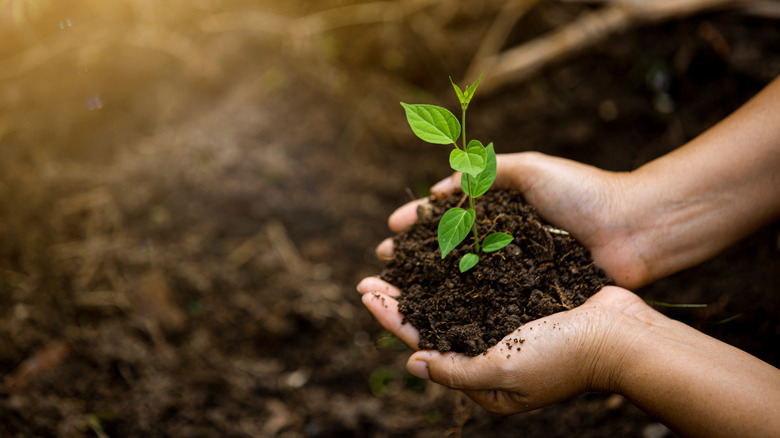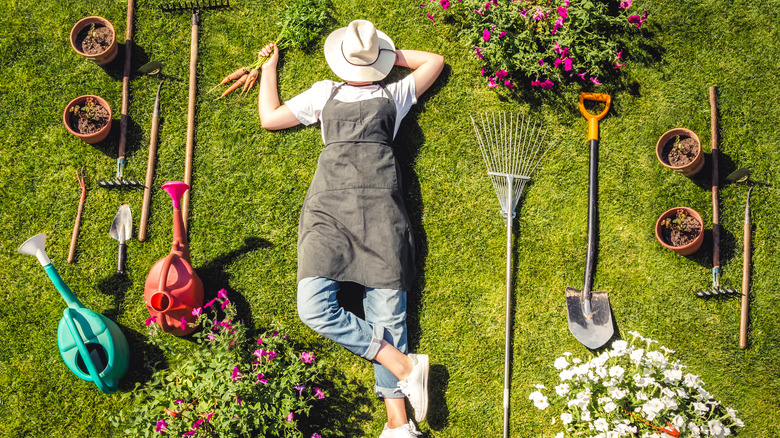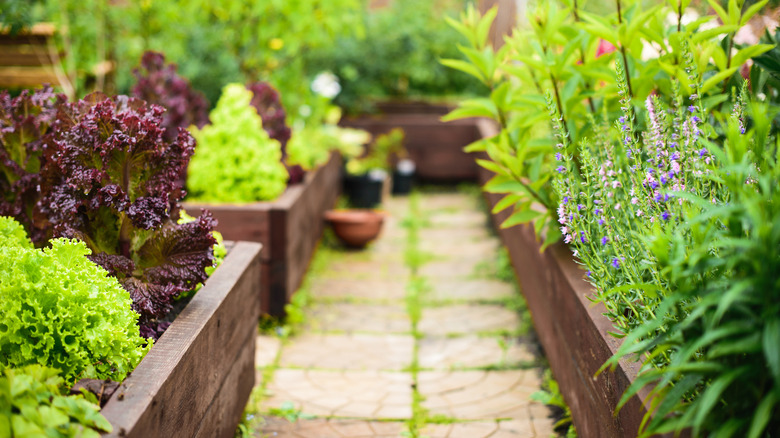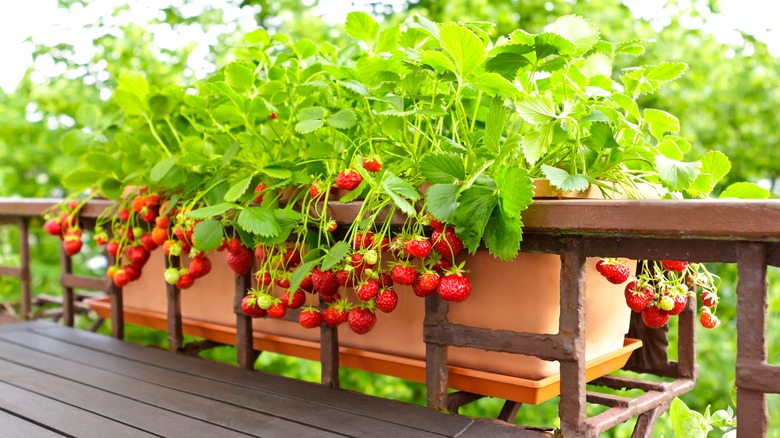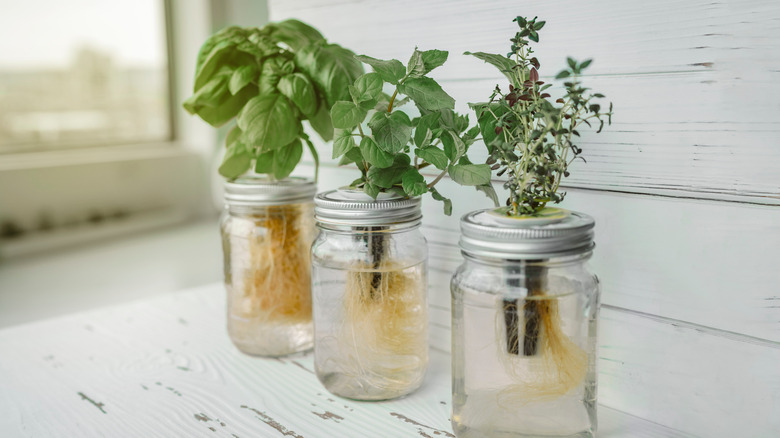Four Types Of Gardening And How To Decide Which Is Right For You
What better way to spend the day than outdoors, enjoying your garden in the sunshine and fresh air? Gardening is good for the soul as well as the bank account when you grow your own produce, and there are many ways to do so. In-ground gardens are the traditional way to go, but not everyone has the space to make them happen. The Clinton Courier states that backyard gardens are vulnerable to inclement weather as well as hungry wildlife. These gardens will also limit the variety of plants you can grow, depending on the conditions of your environment. Do you live in a cold zone but are dying to grow a tropical plant? Other gardening options may allow you to accomplish the impossible.
Using raised beds with a rich potting mix will make it possible to arrange your garden in areas where soil nutrients may be severely lacking. Container gardening is an excellent option for those with very small yards or even just a stoop or patio. Finally, hydroponic gardening — growing plants without soil — is a flexible option that can be done entirely indoors. You can become a gardener whether you have an expansive yard or are confined to only a small balcony. Your space constraints, budget, and the types of plants you wish to grow will significantly impact the kind of gardening you choose to try. Let's look at four distinct options to help you decide.
1. In-ground gardening
If you've got the yard for it, in-ground gardening is the usual option. As soon as the last frost has come and gone, it'll be time to get outside and start digging. According to the Gardening Channel, the chief benefit of the classic backyard garden is cost. A few garden tools, seeds, fertilizer, and a hose are all you need to get yours started. Fertilizer and soil amendments will become vital as you move through the growing season. The Gardening Channel also recommends mulch to squash down weeds and keep your soil moist. You'll find that taking good care of the ground you're cultivating will reap considerable plant health and harvest bounty rewards.
Common issues that can arise with an in-ground garden include small rodents like moles burrowing underground and disturbing your precious plants and larger animals like rabbits and deer munching away at your young produce before you even get a chance to pick it. These problems can be solved with fencing and netting, which can be costly and time-consuming to erect. Depending on the materials, HomeGuide estimates a range of $5 to $25 per foot for fencing. Weeds are also a big drawback to converting an area of your lawn into a garden. It's certainly understandable if you'd rather not invest your time into keeping them at bay, especially when all you really want to do is grow those vegetables.
2. Raised bed gardening
Perhaps you have outdoor space, but it's covered in tile, or the soil quality in your area is known to be less than stellar. In these cases, raised bed gardening is a solid option. You'll still enjoy the pleasures of being outdoors with your hands dug deep into the soil — it'll just be a high nutrient content potting mix that you bought at the local garden center. Raised beds can be purchased or built, whichever suits your budget and DIY confidence level. The Spruce offers great construction ideas, from basic wooden boxes to custom-built brick and metal designs. They also note that raised beds keep those vermins away!
If you have lower back pain or trouble continually squatting and standing for long periods, you've got yourself another reason to seriously consider raised beds. Eartheasy lists increasing the height of your garden beds as its number one tip for limiting pain. Even just 18 inches can be an improvement, but you can go waist high or higher if you want. With this type of gardening, you have the freedom to get very specific about where your plants grow. Another excellent tip from Eartheasy is to leave space on all sides so you can walk around the beds. Also, don't have them built excessively wide. This way, you'll never be reaching too far. Finally, adding trellises inside your raised garden beds will also help bring your plants up to waist or even eye level.
3. Container gardening
Think you don't have enough space to grow your own food? Well, container gardening can be done anywhere, from a spot on the front porch to a box installed on a windowsill. The Texas A&M AgriLife Extension lists all the vegetables you can grow in your backyard as options for container growing. Everything from broccoli and turnips to tomatoes and spinach is fair game. Containers make perfect homes for flowers, too. You can mix and match your fruits and veggies with gorgeous blooms in between. If you've got a sunny window, you can keep your containers outside for the spring and summer and then bring them indoors for the colder months.
Containers come in all shapes and sizes, so this option leaves room for creativity. Per The Old Farmer's Almanac, drainage is a crucial factor when choosing containers. Also, consider the material the pots are made of. Plastic pots are popular because they're light and reusable, and terra cotta pots are heavier but more attractive. There's also size and shape to think about. Long rectangular window boxes are suitable for fruits and vegetables that need to spread out, like strawberries — as pictured — and vining cucumbers. A deep 5-gallon container is best for tomatoes, while shallow pots will work just fine for lettuces and kale. Take a look around your yard and house to find other items that can be turned into containers; just remember to drill drainage holes in the bottom of each one.
4. Hydroponic gardening
Hydroponic gardening is the process of growing plants in water without the use of soil. It can be as simple as herbs in a jar of water sitting on your windowsill or as complicated as a full equipment setup that takes over a garage or basement. According to No Soil Solutions, you can either rely on sunlight for photosynthesis or use grow lights. If you're unsure about lighting, pick up a full spectrum LED to get you started. They're inexpensive and efficient, and they help a wide array of plants grow. Although you won't be using traditional soil, you'll still have to pick a growing medium. This can be something like Rockwool, clay pebbles, or perlite, which you'll likely recognize as the lightweight white specks added to the soil for aeration, via No Soil Solutions. Once you've got a basic setup going, it's time to learn about nutrients and pH levels.
Of all the options, hydroponic gardening is probably the one that can get the most expensive and complicated the fastest. But it doesn't have to be that way. No Soil Solutions stresses that planning is the most crucial aspect of getting this type of garden up and running. Start with those jars of water and step it slowly from there. Research is an excellent companion, but don't forget to pick your head up from all that reading and enjoy the plants you're growing naturally in your home.
